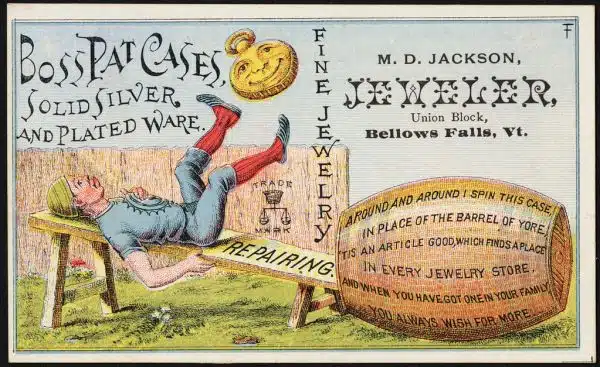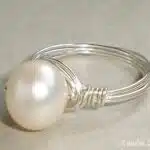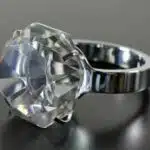Fine jewelry is a treasured possession for many individuals. It not only holds significant monetary value but also carries sentimental value. Proper storage of fine jewelry is essential to maintain its luster, prevent damage, and increase its longevity. Jewelry storage experts recommend that jewelry should be stored in a safe and secure place, away from direct sunlight, heat, and moisture.
Storing fine jewelry can be challenging as it requires understanding the different types of metals, stones, and materials used in creating them. Diamonds, gold, silver, and other precious gemstones require special care to ensure they remain in pristine condition over time. This article aims to provide a comprehensive guide on how to safely store your fine jewelry while keeping it organized and accessible. By following these guidelines, you can rest assured that your cherished pieces will remain protected and ready-to-wear for years to come.
Understanding The Importance Of Proper Jewelry Storage
Proper organization and storage of fine jewelry are essential for maintaining their longevity. Whether it is your everyday pieces or special occasion ones, they all require proper care and attention to ensure they remain in excellent condition. The importance of proper jewelry storage cannot be overstated, as it prevents unnecessary damage and ensures that your pieces retain their value.
One of the primary reasons why proper jewelry storage is crucial is that it helps keep your pieces organized. When you store your jewelry haphazardly, it can become tangled or damaged, making it difficult to wear them when you need them. It also leads to a frustrating experience when trying to find a specific piece. Organizing your jewelry properly not only saves time but also helps keep them in good condition.
Another reason why proper jewelry storage is critical is that it helps prolong the lifespan of your pieces. Fine jewelry is often delicate and requires specialized care to prevent damage from scratches, moisture, dust, or harsh chemicals. Proper storage protects them from these elements and ensures that they maintain their shine and brilliance for years to come.
To ensure that your fine jewelry lasts for generations, proper organization and storage are necessary. It not only keeps them organized but also protects them from damage caused by external factors such as moisture or dust. The next section will discuss how choosing the right storage container for your fine jewelry can make all the difference in keeping them safe and secure.
Choosing The Right Storage Container For Your Jewelry
When it comes to choosing a storage container for jewelry, material is an important factor to consider. Security features such as locks or latches can help prevent unwanted access to jewelry. Additionally, size should be considered when selecting a storage container, so that jewelry can fit comfortably. Lastly, one should not overlook the design of the container, as aesthetics can be important for many people.
Material
When it comes to safely storing your fine jewelry, the choice of material for your storage container is crucial. Different types of jewelry materials require different levels of care and protection. Jewelry made from gold, silver, or platinum are less prone to tarnishing compared to those made from other metals such as copper or brass. If you have jewelry with stones, it’s important to choose a storage container that will not scratch the surface of the gemstones. A cloth-lined box or pouch would be a great option for this kind of jewelry.
Durability is also an essential factor when choosing a storage container for your fine jewelry. You want a container that can withstand wear and tear without breaking down easily. For instance, a wooden box may look elegant but may not provide adequate protection against moisture or humidity, which could damage certain types of jewelry over time. On the other hand, plastic containers may be durable but lack aesthetic appeal. A good option would be a metal storage box lined with soft fabric as this provides both durability and protection.
In conclusion, when choosing the right storage container for your fine jewelry collection, it’s important to consider the material and durability of the container. The type of material used in making your jewelry should guide you in selecting appropriate storage options while durability ensures that your items remain safe and secure over time. Investing in quality storage containers will protect your valuable assets from damage and ensure their longevity for years to come.
Security Features
When it comes to protecting your fine jewelry, choosing the right storage container is crucial. We’ve already discussed the importance of material and durability in previous subtopics. However, another critical factor to consider is security features. Fine jewelry is often valuable, both monetarily and sentimentally, making it a prime target for theft or loss. Therefore, investing in a storage container with advanced security features can help give you peace of mind.
One option for added security is a biometric authentication system. These systems use unique physical characteristics such as fingerprints or facial recognition to grant access to the container’s contents. This feature ensures that only authorized individuals can open the container and makes it nearly impossible for thieves to gain access. Additionally, some containers may have built-in surveillance cameras that monitor activity around the container.
While these security features may come at an additional cost, they are worth considering if you own high-value jewelry or want extra protection for sentimental pieces. A secure storage container with biometric authentication and surveillance cameras will give you confidence that your collection remains safe and protected even when you’re not around.
Avoiding Direct Sunlight And Heat Exposure
To ensure the longevity and beauty of your fine jewelry, it is important to be mindful of its exposure to direct sunlight and heat. These two factors can have a significant impact on the condition of your jewelry over time. Direct sunlight can cause discoloration, especially in gems and stones that are sensitive to UV rays. Heat exposure can also lead to discoloration, as well as damage to delicate materials such as pearls or enamel.
Preventing discoloration and minimizing oxidation are critical when it comes to storing fine jewelry. It is recommended that you store your jewelry in a cool, dry place away from windows or areas that receive direct sunlight. This will help protect against both discoloration and oxidation. Additionally, it is important to avoid storing jewelry in areas with high humidity, such as bathrooms or kitchens, as this can also exacerbate the effects of oxidation.
By taking these precautions, you can help ensure that your fine jewelry remains beautiful for years to come. Avoiding direct sunlight and heat exposure is just one step in proper jewelry storage. In the next section, we will discuss how to protect your jewelry from moisture and other environmental factors that can cause damage over time.
Protecting Jewelry From Moisture
A piece of fine jewelry is like a delicate flower that needs constant care and attention. One of the biggest enemies of fine jewelry is moisture, which can cause rust and other forms of damage. To protect your precious belongings from moisture, you need to take certain preventive measures.
The first step in preventing rust is to store your jewelry in a dry place. Make sure that the storage area is well-ventilated and has low humidity levels. Avoid storing jewelry in areas that are prone to dampness, such as bathrooms or basements.
Another effective way to protect your jewelry from moisture is by using desiccants. These are materials that absorb moisture from the air, keeping your jewelry dry and safe. Some common types of desiccants include silica gel packets, activated charcoal, and calcium chloride crystals. Place one or more of these desiccants in your jewelry box or bag to keep it dry.
To further prevent any damage caused by moisture, it’s best to separate your jewelry by type and material. This will not only help prevent tangling but also minimize scratching and other forms of physical damage caused by friction between different types of jewelry. By taking these simple steps, you can ensure that your fine jewelry remains safe and beautiful for years to come.
Separating Jewelry By Type And Material
Protecting your jewelry from moisture is just the first step in ensuring its longevity. The next step is to separate your jewelry by type and material. By doing this, you will avoid any potential damage caused by material compatibility issues. For example, storing silver and gold jewelry together can result in tarnishing of the silver pieces due to chemical reactions between the metals.
Organizing your jewelry by occasion is also a great way to keep it safe and easily accessible. This means separating your everyday wear from special occasion pieces. Not only will this help you locate specific items more quickly, but it will also prevent unnecessary wear and tear on your favorite pieces.
To further protect your silver jewelry from tarnishing, consider using anti-tarnish strips when storing them. These strips are designed to absorb moisture and other airborne pollutants that can cause tarnishing over time. Simply place one or two strips in your jewelry box or storage container alongside your silver pieces for optimal protection. With these simple steps, you can enjoy your fine jewelry for years to come while keeping it safe and organized.
Using Anti-Tarnish Strips For Silver Jewelry
Silver jewelry is prone to tarnishing due to its interaction with oxygen and other environmental factors. Tarnishing not only diminishes the shine of silver pieces but also causes discoloration, which can ruin the appearance of your jewelry. To prevent this from happening, it is recommended to use anti-tarnish strips for silver jewelry. These strips contain a special formula that absorbs moisture and prevents oxidation, thus keeping your silver jewelry shiny and new.
When using anti-tarnish strips for silver jewelry, it is essential to place them correctly in your storage container or drawer. Ideally, you should place one strip per small container or two strips per large container or drawer. Make sure that the strip comes into direct contact with the silver piece by placing it on top or underneath the items. This will ensure that the anti-tarnish properties are working effectively. Additionally, replace the strips every six months to maintain their effectiveness.
While preventing tarnishing is crucial in preserving your silver jewelry’s appearance, it is equally important to know how to properly store delicate gemstones to avoid scratches and chips. Gemstones such as diamonds, rubies, sapphires, emeralds, and pearls are prone to damage when stored incorrectly. Therefore, it is recommended to store them separately from other pieces of jewelry in a soft pouch or cloth bag. You can also place them in individual compartments within your storage container or drawer to prevent them from rubbing against each other.
When storing fine jewelry such as silver pieces and delicate gemstones, taking preventative measures such as using anti-tarnish strips and proper storage techniques will help preserve their quality and beauty over time. By following these tips, you can ensure that your precious treasures remain in pristine condition for years to come. In the next section about cleaning jewelry before storage, we will discuss how cleaning plays an important role in maintaining the longevity of your fine jewelry.
Cleaning Jewelry Before Storage
After using anti-tarnish strips for your silver jewelry, the next step in safely storing fine jewelry is to clean it. Even if you only wore a piece of jewelry once, it can still accumulate dirt, oil, and grime that can damage its beauty and value over time. Jewelry polishing techniques are essential to maintaining your collection’s quality and luster.
Choosing the best cleaning solutions for your jewelry depends on the type of metal and stones used in each piece. Gold and diamonds require different cleaning methods than silver or pearls, for example. Additionally, some cleaners may be too harsh or abrasive for delicate materials like opals or emeralds. It’s important to research or consult with a professional jeweler before using any cleaning products on your jewelry.
Properly caring for your jewelry can help ensure that it lasts for generations to come. By following simple steps like removing jewelry before showering or swimming, you can prevent damage from soap, chlorine, and other chemicals that can weaken metals or harm gemstones. Remember that prevention is always better than cure when it comes to preserving your precious pieces.
Removing Jewelry Before Showering Or Swimming
As a jewelry storage expert, it is important to consider not only where you store your fine jewelry but also when and how you wear it. Showering with jewelry or swimming with it can be damaging to both the pieces themselves and to your skin.
When water enters the crevices of your jewelry, it can cause damage that may not be immediately visible. Over time, this damage can lead to discoloration, rusting, or even loosening of stones and settings. Additionally, chlorine and other chemicals found in pools can have an adverse effect on many types of precious metals and stones.
While it may seem tempting to leave your jewelry on during these activities, taking just a few extra moments to remove them beforehand can save you from potential long-term damage. It’s best to store your pieces in a safe or vault while engaging in any activities that involve water.
In the next section, we will discuss how proper storage in a safe or vault can further ensure the longevity and safety of your fine jewelry. Remember that by taking care of your precious pieces now, you are investing in their future value and beauty for years to come.
Storing Jewelry In A Safe Or Vault
Storing fine jewelry in a safe or vault is one of the best ways to ensure their safety and longevity. The first step in storing jewelry in a safe or vault is to determine whether you want to store it at home or in a bank. Both options have their benefits, but it ultimately comes down to personal preference. Storing your jewelry at home allows for easy access and convenience, while storing it in a bank provides added security and peace of mind.
Once you have decided where to store your jewelry, the next step is choosing the right safe or vault size. A safe that is too small may not provide enough space for all of your items, while a safe that is too large may take up unnecessary space and cost more than necessary. It’s important to measure your jewelry beforehand and choose a safe or vault that fits your needs accordingly.
Overall, storing fine jewelry in a safe or vault can provide an added layer of security and protection against theft, damage, and loss. However, it’s important to carefully consider whether you want to store your jewelry at home or in a bank, as well as choosing the right size for your needs. In the next section, we will discuss how insuring high-value jewelry can provide additional protection and peace of mind.
Insuring High-Value Jewelry
- Assessing the value of jewelry should be done by a qualified appraiser to ensure accurate pricing.
- Jewelry insurance policies should cover theft, loss, and damage, and should be tailored to the individual’s needs.
- It is important to be aware of any legal requirements regarding jewelry storage, such as applicable laws in the jurisdiction where the jewelry is stored.
- Jewelry should be stored in a secure location, such as a safe or locked jewelry box.
- The condition of the jewelry should be documented and regularly monitored to ensure it is adequately protected.
- Valuables should be stored in an environment where temperature and humidity can be controlled.
Assessing Value
As a jewelry storage expert, it is crucial to understand how to assess the value of high-end jewelry pieces. One of the essential factors in determining the worth of a piece is its authenticity. The first step in assessing authenticity is researching the brand or designer and examining any certification or hallmark stamps. Additionally, inspecting the quality of materials used, such as diamonds and precious metals, can also help determine authenticity.
Another aspect to consider when assessing value is determining the worth of the piece. This involves evaluating various factors, including the rarity of the item, its condition, and current market demand. Appraisals from professional jewelers can provide an accurate value estimate and should be updated regularly to reflect any changes in market trends or fluctuations.
In conclusion, accurately assessing authenticity and determining worth are critical steps in insuring high-value jewelry pieces. As a jewelry storage expert, it is essential to educate clients on these aspects and encourage them to have their pieces regularly appraised by professionals. With proper assessment and care, fine jewelry can remain a treasured possession for generations to come.
Jewelry Insurance Policies
Insuring high-value jewelry is crucial to protect these valuable possessions from loss, damage, or theft. One way to ensure the protection of such jewelry is through insurance policies specifically tailored for fine and high-value pieces. Jewelry insurance policies cover a range of risks, including theft, loss, damage, and even mysterious disappearance.
To insure high-value jewelry properly, it is essential to obtain an accurate appraisal from a professional jeweler. The appraisal should reflect the current market value of the piece and include all relevant information about its design and materials. Insurance companies often require this information before issuing a policy.
It is also important to note that most insurance policies have common exclusions, such as wear and tear, damage due to improper care or maintenance, and losses sustained during war or nuclear events. Additionally, many policies may require specific security measures for higher valued items. As a jewelry storage expert, it is crucial to educate clients about these exclusions and recommend additional security measures that can help mitigate risk and provide sufficient coverage for their treasured pieces.
Legal Requirements
Jewelry insurance is an essential requirement for individuals who own high-value jewelry. However, insuring such valuable possessions does not only involve obtaining an accurate appraisal and choosing the right policy. There are also legal requirements that must be considered when insuring high-value jewelry. As a jewelry storage expert, I understand that it is my responsibility to educate clients about these legal compliance requirements.
One of the most critical legal requirements for jewelry insurance is compliance with state laws and regulations. Each state has its own set of laws regarding insurance policies, including those that cover high-value jewelry. These laws may dictate specific coverage limits, exclusions, and even licensing requirements for insurers and appraisers. It is crucial to ensure that the policy chosen complies with all relevant state regulations.
Another legal requirement to consider when insuring high-value jewelry is transparency in disclosing all relevant information about the piece being insured. This includes disclosing any previous damage or repairs done on the item before insuring it. Insurance companies need to know this information before issuing a policy so they can properly assess the risk involved in covering the piece. Failing to disclose such information may result in denied claims or policy cancellation in case of loss or damage. As a responsible jewelry storage expert, I always remind clients of their obligation to provide full disclosure when obtaining insurance coverage for their valuable possessions.
In conclusion, as a knowledgeable jewelry storage expert, I understand that there are legal compliance requirements that must be addressed when insuring high-value jewelry pieces. Ensuring compliance with state regulations and providing full disclosure about the item being insured are just some of these requirements that must be met before obtaining a policy. By educating clients about these essential aspects of jewelry insurance, we help them protect their treasured possessions from loss, damage or theft while also mitigating potential risks associated with non-compliance with legal regulations.
Storing Jewelry During Travel
When it comes to traveling with fine jewelry, packing it safely and securely is crucial. There are a few tips for organizing your jewelry before you pack it so that it stays protected during transit. First and foremost, make sure to clean all of your pieces before packing them. Any dirt or residue can scratch or damage the jewelry during transport.
Once your jewelry is clean, separate each piece by type and size. This will help you keep track of everything and prevent tangles or knots from forming. Use a soft pouch or individual compartment for each piece to avoid any rubbing or scratching against other items in your luggage. Additionally, consider investing in a travel jewelry case that has built-in compartments and padding for extra protection.
When it’s time to pack your jewelry, place the individual pouches or compartments into a larger container such as a jewelry roll or box for added security. Keep this container with you rather than checking it with other luggage. This way, you can keep an eye on your valuable items at all times. By following these tips for organizing and packing jewelry during travel, you can ensure that your pieces arrive at their destination safe and sound.
Transition: While taking measures to protect your fine jewelry during travel is important, keeping track of what you have is equally crucial. In the next section, we’ll discuss the importance of keeping an inventory of your jewelry collection.
Keeping An Inventory Of Your Jewelry
After traveling with your fine jewelry, it is essential to store them safely in a secure location. Keeping your jewelry organized and protected not only prevents them from getting lost but also helps to maintain their condition and value. As a jewelry storage expert, I recommend investing in a high-quality safe or lockbox that is fireproof and waterproof to safeguard your precious items.
Furthermore, it is crucial to consider purchasing jewelry insurance to protect against theft, loss, or damage. This type of insurance covers your fine jewelry beyond what standard homeowner’s or renter’s insurance policies offer. Before purchasing any policy, make sure to read the terms and conditions carefully and choose an insurer that specializes in insuring valuable items.
Keeping track of your jewelry inventory is another essential aspect of storing them safely. By creating a detailed list of all your pieces, including their descriptions, values, and photographs, you can easily identify missing items or provide necessary information for insurance claims. To help get you started on organizing your collection, refer to the table below for an example organization system.
| Jewelry Piece | Description | Value |
|---|---|---|
| Diamond Ring | 14k gold band with 1-carat diamond | $5,000 |
| Pearl Necklace | 18-inch strand of freshwater pearls with silver clasp | $500 |
| Sapphire Earrings | Stud earrings with 2-carat blue sapphires set in white gold | $3,000 |
| Gold Bracelet | Solid 24k gold bangle bracelet | $2,500 |
| Ruby Pendant | Oval-shaped ruby set in yellow gold on a delicate chain necklace | $1,200 |
By taking these steps to store your fine jewelry safely and keeping track of them accurately through an inventory system and acquiring appropriate insurance policies will give you peace of mind while ensuring the longevity and value of your cherished pieces. The next section will discuss how maintaining jewelry over time can preserve their beauty and value.
Maintaining Jewelry Over Time
Jewelry maintenance is an essential aspect of long-term jewelry care. Fine jewelry is a valuable investment, and neglecting its upkeep can lead to tarnishing, scratches, and even permanent damage. It is crucial to take preventive measures to keep your jewels looking their best for years to come.
One of the most important steps in jewelry maintenance is proper storage. Storing your jewelry in a safe, dry place away from direct sunlight can help prevent tarnishing and discoloration. When not in use, consider using airtight containers or soft cloth bags to protect your pieces from dust and moisture. Additionally, it is essential to avoid storing different types of metals together as this may cause them to scratch each other.
Long term jewelry care also involves regular cleaning. Over time, dirt and oils can build up on your jewelry’s surface, making it appear dull or discolored. To remove these impurities, consider using warm water and mild soap or specialized cleaning products designed for specific types of metal or gemstones. Regular cleanings will help maintain the shine and brilliance of your pieces.
In addition to storage and cleaning, reappraising your jewelry periodically is another vital aspect of long-term care. As market values fluctuate over time, it is essential to ensure that you have adequate insurance coverage for your pieces’ current worth. Reappraising every few years will give you peace of mind knowing that your investment is protected in case of loss or theft.
Reappraising Your Jewelry Periodically
Like a fine wine, jewelry can increase in value over time. Therefore, just as you might periodically check on the condition of your favorite vintage bottle, it is essential to reappraise your jewelry to ensure it retains its value and remains adequately insured.
Periodic appraisal of your jewelry is essential for several reasons. Firstly, it ensures that you have an accurate idea of the current market value of your pieces, allowing you to keep track of their worth accurately. Secondly, if you are looking to sell or upgrade your jewelry, a recent appraisal will help you determine a fair price for the sale or trade-in. Finally, regular appraisals will enable you to update any insurance policy that covers your jewelry.
Jewelry valuation techniques vary depending on the type of piece and its rarity. For example, when evaluating antique pieces, an appraiser may consider factors such as the maker’s mark and provenance to determine its true worth. On the other hand, when assessing diamonds or precious gemstones’ value, experts may take into account characteristics such as carat weight and clarity. By seeking out an experienced and certified appraiser who specializes in jewelry valuation techniques appropriate for each piece type and age category, you can rest assured that your collection is accurately assessed regularly.
As important as it is to regularly reappraise your jewelry collection at home using reliable testing methods such as gold acid tests or diamond testers (for gemstones), sometimes seeking professional storage advice for rare or antique pieces is necessary. In the next section we will explore how storing these unique treasures requires extra care and consideration beyond typical fine jewelry storage procedures.
Seeking Professional Storage Advice For Rare Or Antique Pieces
When it comes to rare or antique jewelry pieces, it is crucial to seek professional advice on storage. The first step in ensuring the safety of your precious jewels is finding reputable appraisers to authenticate and evaluate their value. This not only helps with insurance coverage but also provides a basis for appropriate storage measures.
Identifying fake or counterfeit jewelry is also important when seeking professional storage advice. This requires a trained eye and knowledge of the characteristics unique to each type of gemstone or metal. A reliable storage expert should be able to educate clients on the differences between real and fake jewelry, as well as provide guidance on how to spot these discrepancies.
Once you have obtained an accurate valuation and identified genuine pieces, it’s time to consider storage options. Depending on the value and rarity of your jewelry, options range from simple home safes to high-security vaults with climate control systems. Your chosen expert can assess your specific needs and recommend the best course of action for safekeeping your antique or rare jewelry. Ultimately, investing in proper storage solutions will ensure that your treasures remain protected for generations to come.
Conclusion
Proper jewelry storage is crucial for maintaining the quality and longevity of your fine pieces. Without adequate protection, jewelry can easily become damaged, tarnished, or even lost. The key to safe storage lies in understanding the unique needs of each piece and taking appropriate measures to protect it. This requires a combination of careful selection of storage containers, proper handling techniques, and regular maintenance.
Choosing the right storage container is essential for keeping your jewelry safe. It’s important to avoid direct sunlight and heat exposure as these can cause damage to certain materials. Moisture can also be a problem when storing jewelry, so it’s recommended to keep items separated by type and material. Regular maintenance is also necessary to ensure that your jewelry remains in good condition over time.
In conclusion, proper jewelry storage is vital for preserving the beauty and value of your fine pieces. By choosing the right storage container, protecting against heat and moisture exposure, separating by type and material, maintaining regularly, reappraising periodically, and seeking professional advice when necessary you can ensure that your precious jewels remain safe for years to come. Don’t take any chances with your valuable possessions – invest in proper storage today!
Image Credits





























